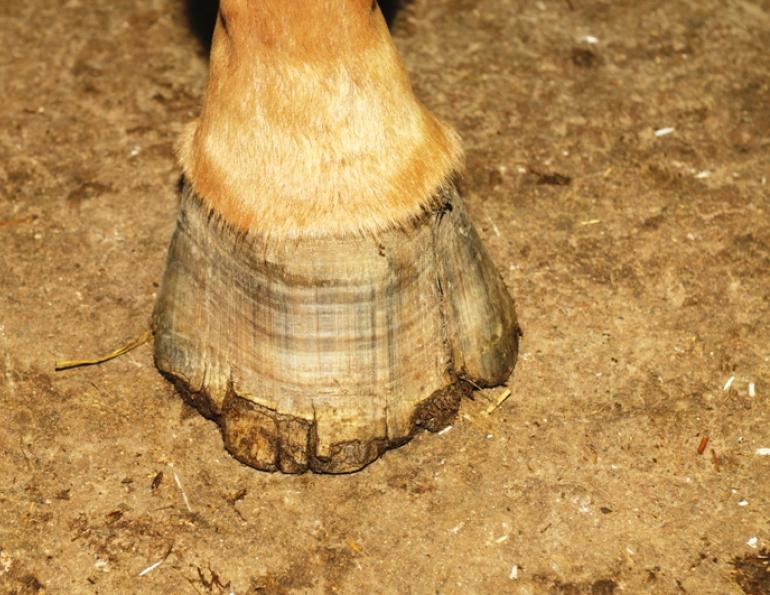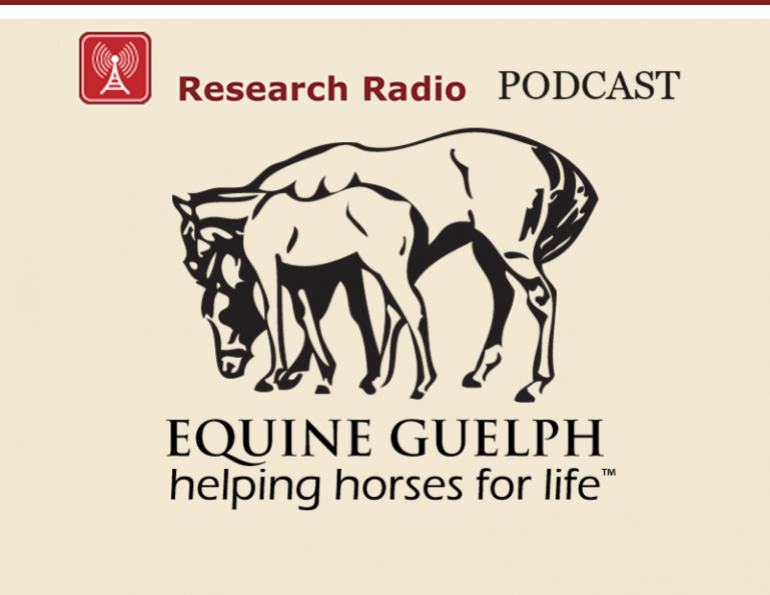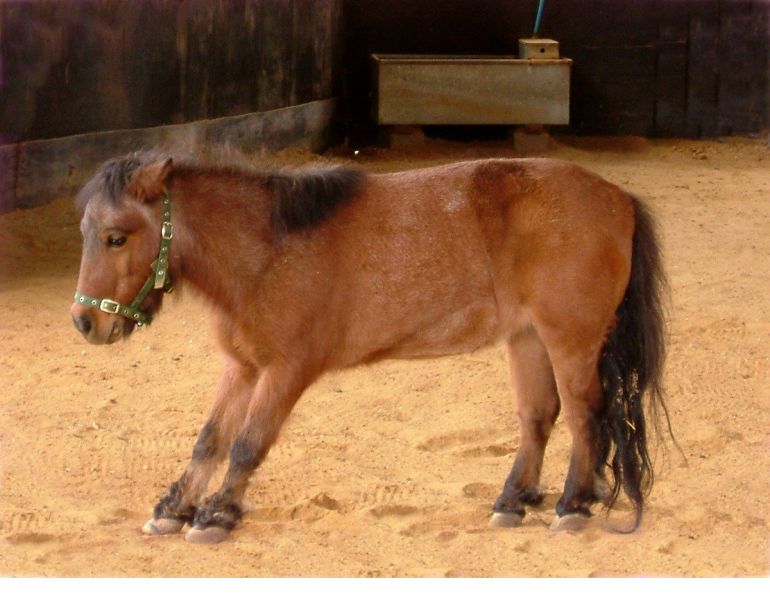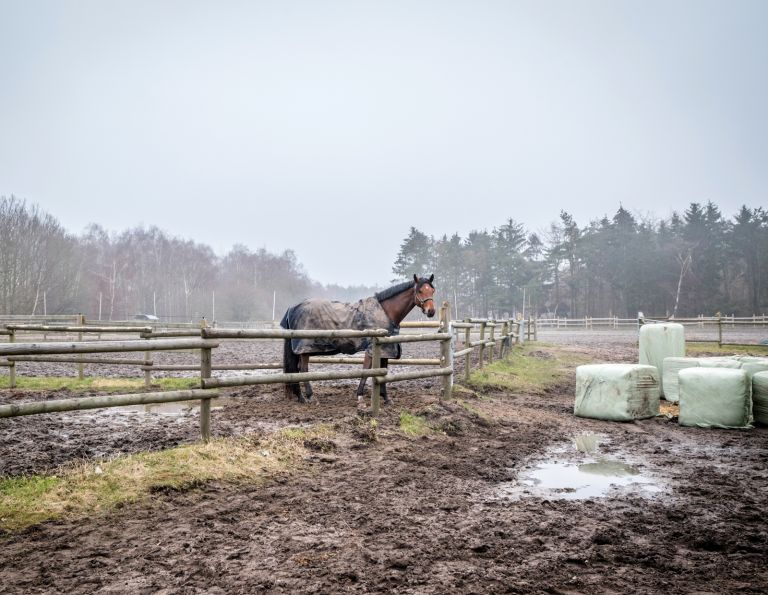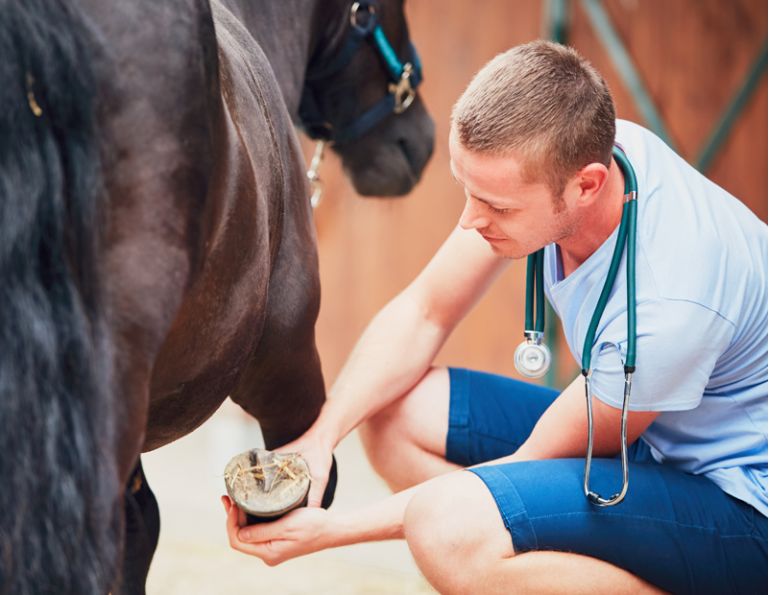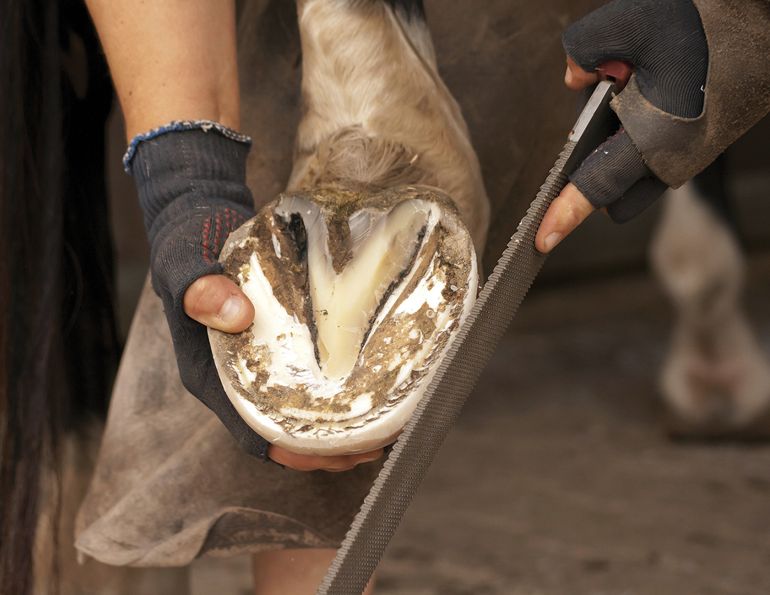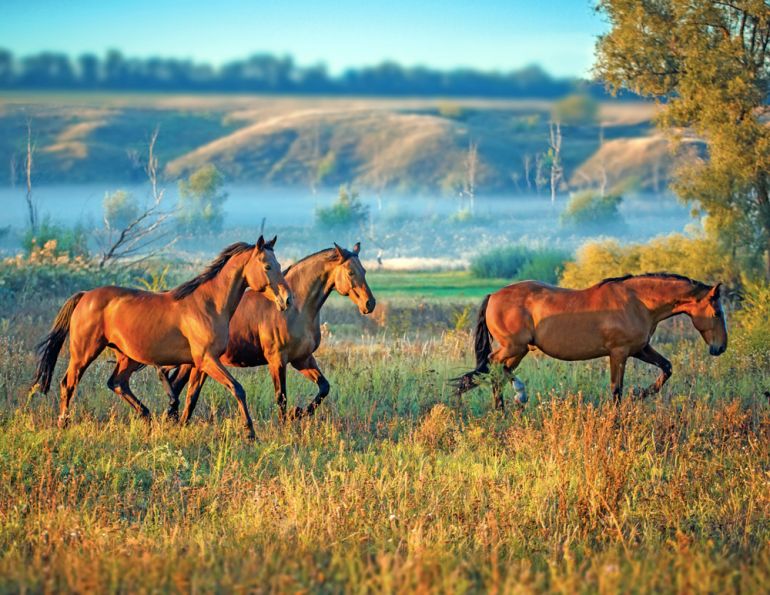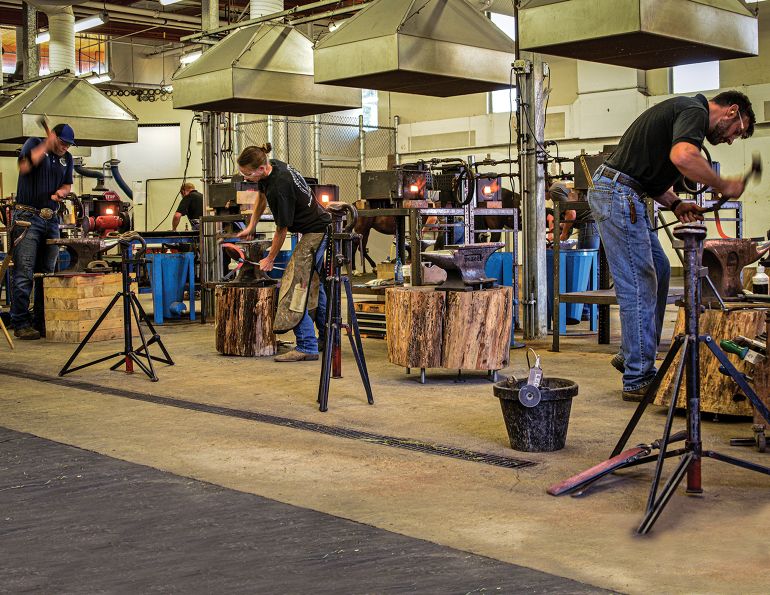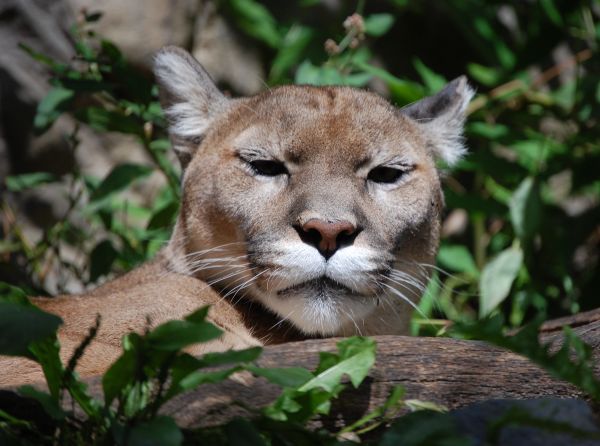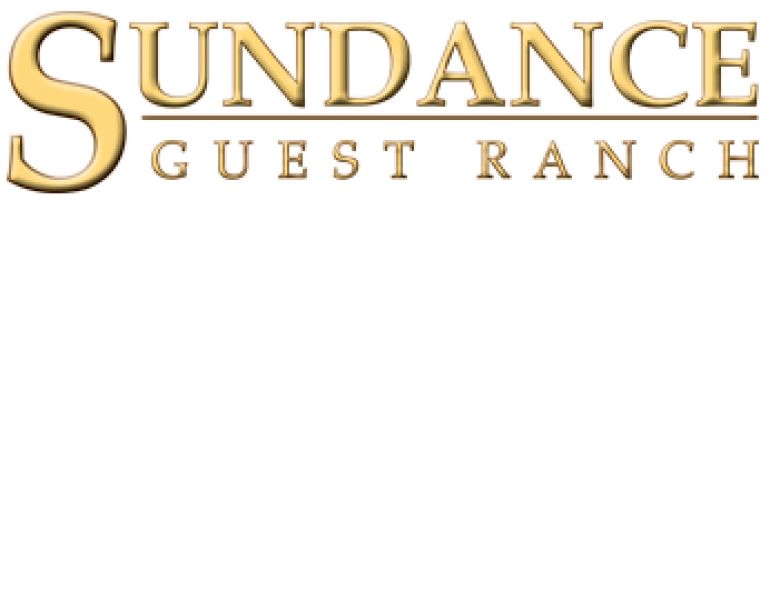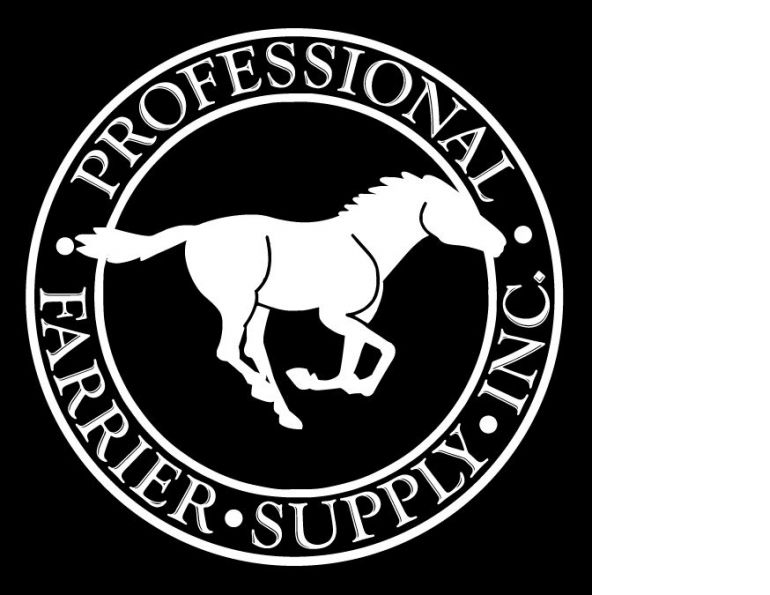By Hans Wiza
For as long as there have been horses, there have been hoof problems. And for as long as there have been hoof problems with domesticated horses, there have been millions of man hours spent trying to find solutions and remedies for them.
Almost invariably the greatest concern has been horses that have become footsore and cannot travel without limping. The cosmetic concerns that we have regarding cracks and breakage may or may not adversely affect a horse’s ability to perform a required function. These problems are often blamed on a horse’s “bad” hooves. But what is a bad hoof? First, let’s define what constitutes a good hoof.
The “good” hoof
A good hoof has a consistent texture to the outer wall that is smooth, shiny, and free from debris, fecal matter, and accumulated dead horn cells, which are especially evident at the coronary band in the form of “barky” looking periople material. There should be an even and gradual taper from the toe to the heel with the longest point being the centre of the hoof and the shortest being the buttress of the heel. The coronary band should have an even flow to it with no exaggerated arcs or dips, wrinkles or ripples. There should be no broken out spots, nor any horizontal or vertical defects affecting the integrity of the hoof wall.
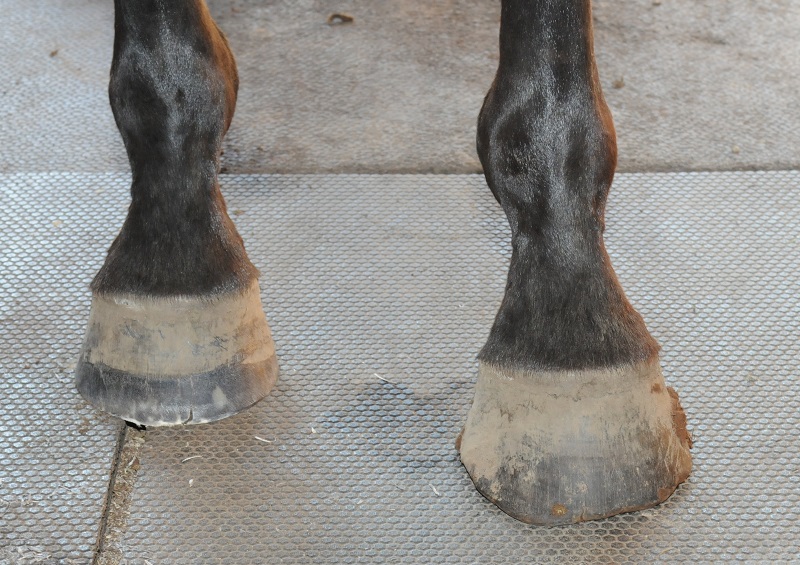
When looking at a “good” hoof from the front, the pastern should be aligned with the centre of the top of the hoof, and the slope of the inside and outside walls should be even and fairly equal.
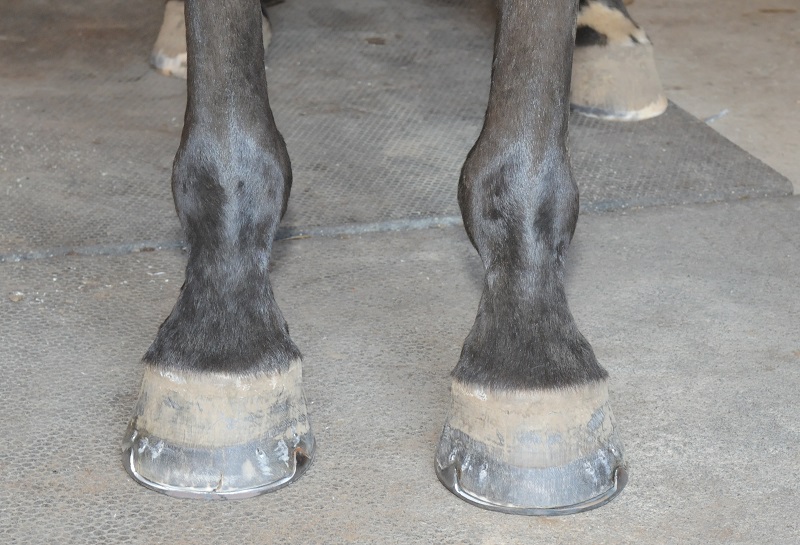
Here, the same “good” hoof is shown after trimming and shoeing. Note that a horseshoe adds to the length of the hoof by whatever the thickness of the horseshoe. A standard eight millimetre horseshoe represents the equivalent of about five to six weeks of hoof growth for the average horse. Photos: Hans Wiza
From underneath, the sole and the frog should be robust and free from decay and excessive attrition, either from wear or over trimming. The white line should be light yellow in colour, narrow, two to three millimetres wide, and dense, without foreign objects such as stones, dirt, or fecal debris imbedded in it.
The bars of the hoof need to be on an angle that will allow them to bear weight in line with the hoof fibres as opposed to being laid flat and thusly bearing weight against the side wall of the bars. Both bars should have the same angle; one should not be more vertical or flopped over than the other.
At rest, the hoof should be situated under the limb with the cannon bone directly over top of the back two-thirds of the frog. The bulbs of the heels should not extend in front of a vertical line descending from the front of the cannon bone to the ground. On front feet the hoof joint should be in a vertical alignment with the leading edge of the carpus (knee). The cannon bone should be at least vertical, preferably with a slight rearward slope from the knee to the pastern. When viewed from the front, the pastern should be aligned in the centre of the top of the hoof and the side walls should have an even and fairly equal slope on both the inside and outside walls. Think of an old fashioned, handheld school bell whose handle comes right out of the middle. When viewed from behind, a vertical line descending from the ergot should be in between the centre of the bulbs of the heels. The bulbs of the heels should be parallel to the ground and both heels from buttress to bulb should be the same length.
Problems arise when one or several of the aforementioned criteria for good hooves are not met. The hoof geometry must be correct and accurate in order for the hoof to be able to perform its function of supporting and propelling the horse.
The “bad” hoof
What we often describe as a “bad” hoof is usually just a hoof that is geometrically unbalanced, a problem which can be remedied through good and judicious farrier work.
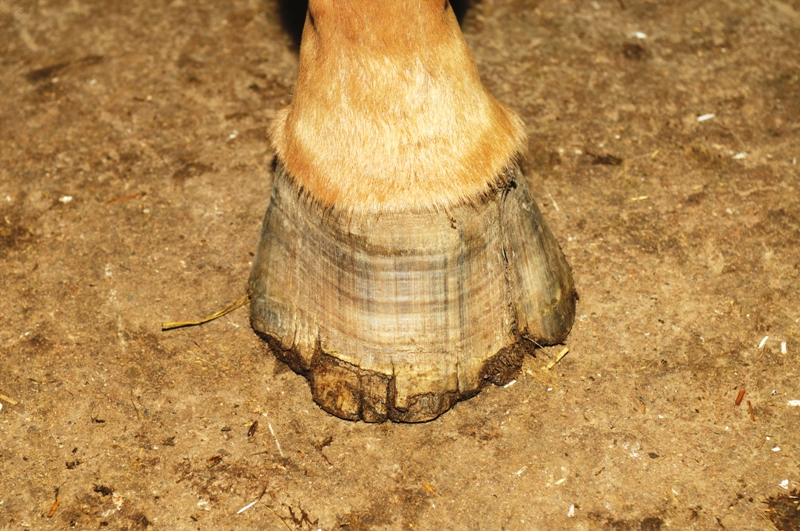
BEFORE: Cracking, flaking, tearing, splitting, bending, folding, and breaking are nature’s way of trimming hooves that are left to their own devices.

AFTER: Farrier appointments at regular intervals of five to seven weeks can help keep your horse’s hooves in tip-top shape.
Hoof is like water. It will do whatever it takes to seek its own level in spite of whatever configurations it finds itself in. The natural function of a hoof is to crack, flake, tear, split, bend, fold, and break. These are nature’s ways of trimming hooves and are all just variations of proper proportion and symmetry gone awry. Hooves left to their own devices are all too often not pretty.
A lot of cracking is the direct result of a hoof (barefoot or shod) trying to find a more suitable configuration so as to provide better support to the limb. Cracking occurs when there is no longer a straight, even alignment of hoof fibre. When hoof wall becomes too long its ability to bear weight decreases due to increased downward and outward pressures across the already sloped hoof fibre. Think of the angled hoof wall as a lever: the longer the lever, the greater the pressure at the end of the lever. Ultimately, this increase in pressure results in a separation of the hoof fibres across extremely predictable meridians. When hoof wall begins to crack, any defects to the hoof will react in equally predictable strain patterns. These strain patterns are almost invariably related to the horse’s conformation and posture. Conformation we can do nothing about, but posture is something which we have a tremendous potential to influence and adjust.
What causes “bad” hooves?
Environment
Nutrition is a much debated and discussed topic, but if your horse’s coat looks shiny and good and he feels energetic, he is probably receiving adequate nutrition. If his coat is dull and wiry and his feet are dull and brittle, a change in diet may be called for. Good grass and good water is sometimes all that is needed to make good hoof horn. Millions of horses that live outside and forage have no difficulty growing copious amounts of strong, tough horn with little or no supplementation. Horses kept in a confined environment that are fed only hay, grain, and pelletized rations may require additional supplementation.
The biggest enemy to a confined horse’s hooves is decay, which can result in a roughened texture to the outer wall and coronary band as well as full blown thrush from a lack of hygiene or a high decay environment. Sufficient turnout with good water, grass, and sun on his bones is a blessing for a horse.
The capacity of a sole and frog to bear weight correlates directly to the surfaces on which the horse stands. If the horse’s hooves have not been subjected to decay or abruptly exposed to overly abrasive conditions, the sole and frog calluses will remain intact and be able to bear weight easily.
Barefoot horses that live on a concrete feedlot slab are typically very flat footed with a tremendously thick, flat sole callus that can easily withstand very sharp stone and terrain. Horses that are barefoot and live on soft, yielding surfaces are more likely to exhibit discomfort and reluctance to go forward on a sharp stone terrain. However, showing discomfort on sharp surfaces does not necessarily mean that the horse is lame. What is seen as a sudden limp may only be a stride or step that was not fully extended or loaded due to the horse’s proprioception (ability to recognize where its extremities are and the loads placed upon them and make instant decisions about how to respond to those loads). Just as we can walk in a plowed field at night when we can’t see where we’re going and not fall over or do a face plant, so too can a horse feel where its feet are and make load-bearing decisions in a nano second.
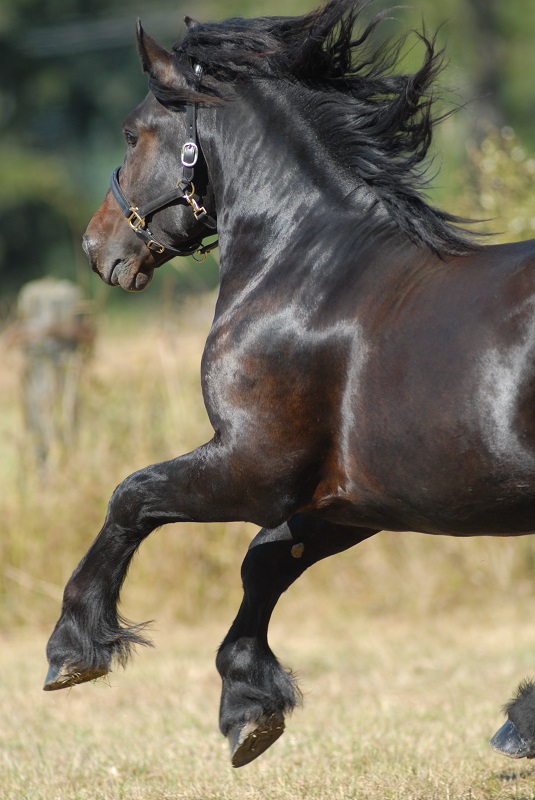
Some breeds, like the Friesian (above), are known for their hardy, durable feet; others, like the Thoroughbred (below), for their flat feet. Photo: Robin Duncan Photography
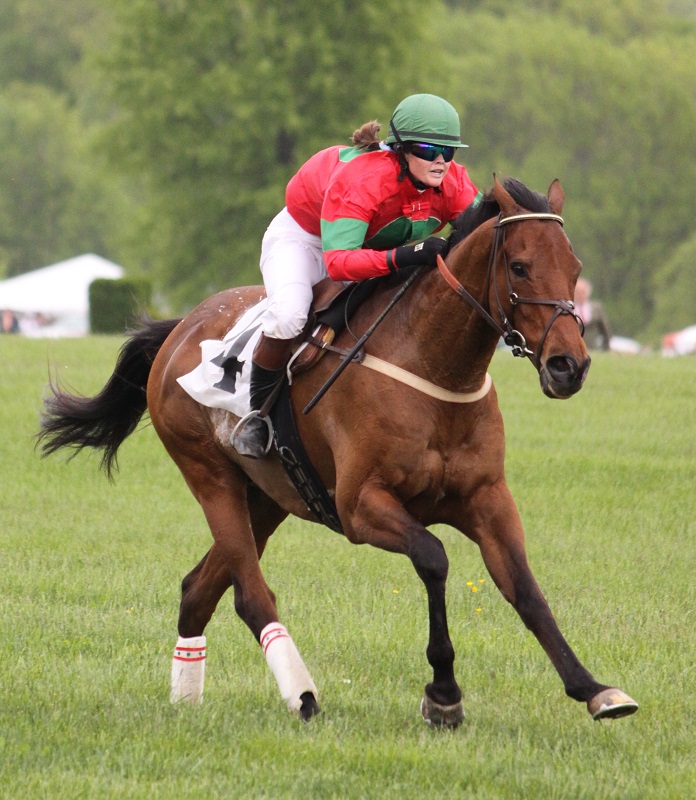
The ability of a hoof to walk from a stall to an arena without having pebbles and stones jammed into it during the first few steps is crucial to the overall integrity of the hoof and hoof wall. The white line, which is soft tissue, hydrates heavily in a stall over night from stall moisture and this soft horn gets dirt pressed into it. This accumulation of aggregate becomes a wedge which pries the outer wall away from the lamina, leaving the hoof wall jagged and splintered. Once this pattern has been established the cycle can become quite vicious and the destruction of the descending horn is perpetually assured.
Genetics
Thoroughbreds tend to have very flat feet, often with broken out quarters, smashed toes, and/or under-run heels, although the extremely robust frog of the Thoroughbred is quite likely one of the factors that makes it a superior athlete. The shock dampening properties of large frogs enables horses to absorb the extremely high concussive forces that speed and jumping impart. In most instances, the Thoroughbred hoof does require a horseshoe to help stabilize and manage healthy and supportive hoof geometry. The Thoroughbred that has been allowed to live on extremely abrasive land may still feel discomfort when ridden barefoot due to the fact that certain breeds just aren’t as robust in the hoof as others. Many lighter type breeds can get by barefoot quite satisfactorily.
Arabians, Canadians, Mustangs, Newfoundland ponies, Icelandic Horses, Standardbreds, and Friesians, to name just a few, are breeds that tend to have hardy, durable feet. One problem these horses do face is that they can sustain tremendous wear, especially at the toe, and still have a robust enough toe callus to sustain them on harsh footing, yet the proportional imbalances of toe to heel can affect the horse’s posture, putting him at increased risk of injury.
Riding
Horses that are not ridden regularly and spend the majority of their time out in the paddock or pasture often do quite well with bare feet. However, horses that are ridden around in circles repeatedly, with the added load of a rider, can develop hoof wear patterns that adversely affect their posture and way of going. Most modern riding takes place within a confined space and as such the number of turns and circles a horse has to make is increased. As a rule, the more turning that takes place, the greater the wear on the outside toe of the hoof. This sets up the geometric imbalance that then distorts the ideal hoof proportions and leads to very predictable strains on the hoof.
Putting the best hoof forward
Humans have come up with a number of different ways to try and intervene in the destruction of hoof wall horn, the most common of which consists of affixing horseshoes to the hoof wall with horseshoe nails. Horseshoes offer protection from excessive attrition, allowing Mother Nature to furnish the hoof with new horn growth.
Bob Marshall, of Hope, BC, is a five-time world champion in the art of horseshoeing and considered by his peers to be a master educator. His shoeing philosophy is simple and straightforward: Trim the hoof, striving to hit key anatomical target points, and apply a shoe to fit the hoof wall as accurately as possible. This means that the shoe must be the same shape as the sole of the hoof while conforming to the outer circumference of the hoof wall while extending a dimes width past the heels.
The problem with attaching a horseshoe to a less than perfect hoof is that the horseshoe confines the hoof to an arbitrary plane. This plane may not necessarily be the most comfortable or mechanically sound choice for the horse’s well-being. But sadly, all too often it’s the only one that is present especially when a hoof is too far worn down. Just because a horseshoe has been fastened to a hoof doesn’t mean that the hoof will stop trying to remodel or won’t tear itself apart if the stresses upon it warrant it.
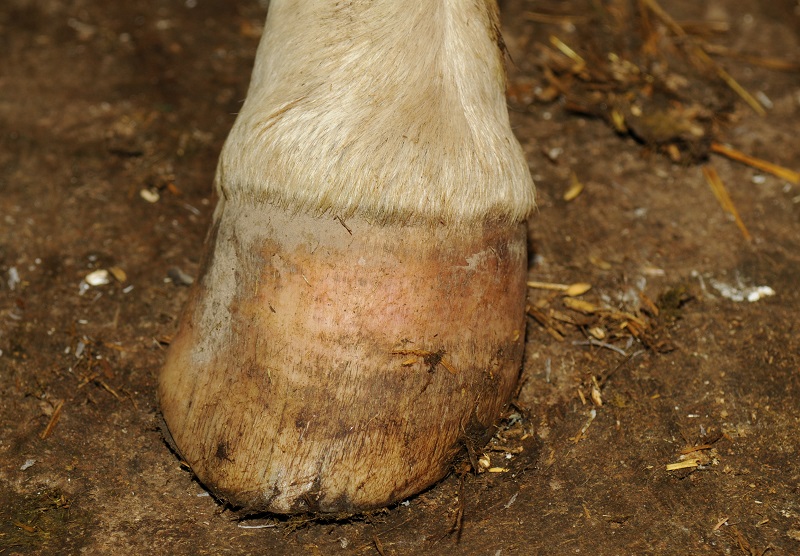
BEFORE: Hooves typically wear down along very specific meridians. The right hind foot of this yearling had worn down very strongly on the medial (inside) of the hoof. This wear pattern is typical during the winter months when horses walk with their toes slightly turned out to provide increased stability and balance on icy surfaces.

AFTER: Many geometrically unbalanced hooves don’t require a huge amount of trimming to correct. Tiny adjustments can make an enormous improvement, the key is finding a knowledgeable farrier who understands where to make the adjustments. Photos: Hans Wiza
A horseshoe adds to the length of the hoof by whatever the thickness of the horseshoe is. A normal, eight millimetre thick horseshoe represents the equivalent of about five to six, sometimes seven, weeks of growth for many horses, especially the finer breeds, and Warmbloods and draft types can grow that much horn in as little as three to four weeks. The application of a horseshoe coupled with seven weeks of growth can result in an overall hoof length the equivalent of three months’ worth of growth. Any increase in length to the hoof results in higher strain, not only to the hoof, but everywhere else in the horse’s body.
Bruce Daniels (in my eyes, perhaps the Dean of American farriers) once said to me, “If you can reset a horse more than once, he’s wearing too much steel.” Many of his horseshoes were six to seven millimetres thick. Most commercial horseshoes are between eight and ten millimetres thick. The thickness of the shoe should depend on the weight of the horse; the lighter the horse, the lighter the shoe ought to be. In recent years, a disturbing trend of putting extremely thick, wide shoes on horses that only ever go around a groomed arena surface and out to pasture has emerged. The added weight and inertia of heavy, thick, wide, and long horseshoes can drag the limb on too exaggerated an amplitude in the limb flight pattern. Horses performing high speed activities, or those requiring a crisp, snappy gait (jumpers, barrel racers, dressage horses, etc.), will find that heavy shoes are a detriment. That being said, thick horseshoes have their place on the hooves of horses requiring a lot of traction and the ability to withstand torque.
Growth rates vary from horse to horse but most feet grow at a rate of about five to eight millimetres in a month (more in the summer or with increased exercise). The length of time required to grow enough new wall horn to push out the old nail holes is often outstripped by the need to re-shoe the horse to maintain mechanical efficiency. A regular shoeing interval of five to seven weeks is fairly common in North America. In Europe, the shoeing interval is often a little longer, around eight to ten weeks. The shorter interval presents the option of restoring mechanical efficiency sooner between each shoeing while the longer interval presents fewer nail holes in the wall.
Regular five week shoeing intervals coupled with a consistent trimming and shoeing style will enable a farrier to maintain a shape that has become lengthened but not yet distorted. Many times when shoes have been left on too long they become embedded at the heels and even the quarters. The quarters will then “squirt” sideways, distorting the wall so that the wall is no longer concentric to the sole. This in turn causes tearing away at the laminar bed. This weakens the hoof and encourages the destruction of heel fibre, leading to low heels. This is not the only way that low heel syndrome occurs but it is a common cause amongst shod horses. The unshod horse will often have the quarters break out as this is a natural way for the horse to find a way to relegate the quarters and the sole to a more mechanically desirable plane, but it ain’t pretty! This will put a farrier’s skills to the test by requiring damage control as opposed to sound maintenance.
The best and perhaps the only way to ensure that your horse’s hooves remain in good condition and in a sound, workable configuration is to be aware of the situations that impose destructive forces on hooves, and be prepared to have the feet seen to by an experienced farrier to arrest any further erosion of hoof quality.
With over 40 years of farriery experience, Hans Wiza has been a member of the Canadian Farrier Team three times, and a North American Championship trophy adorns his mantle. He is a founding member of the Ontario Farriers Association (OFA), on which he served two terms as Treasurer followed by two terms as President, and instituted the OFA certification program in 1986. Hans has developed a step-by-step approach to hoof trimming that marries the artistic aspects of farriery with the technical absolutes.
Main Photo: Hans Wiza



